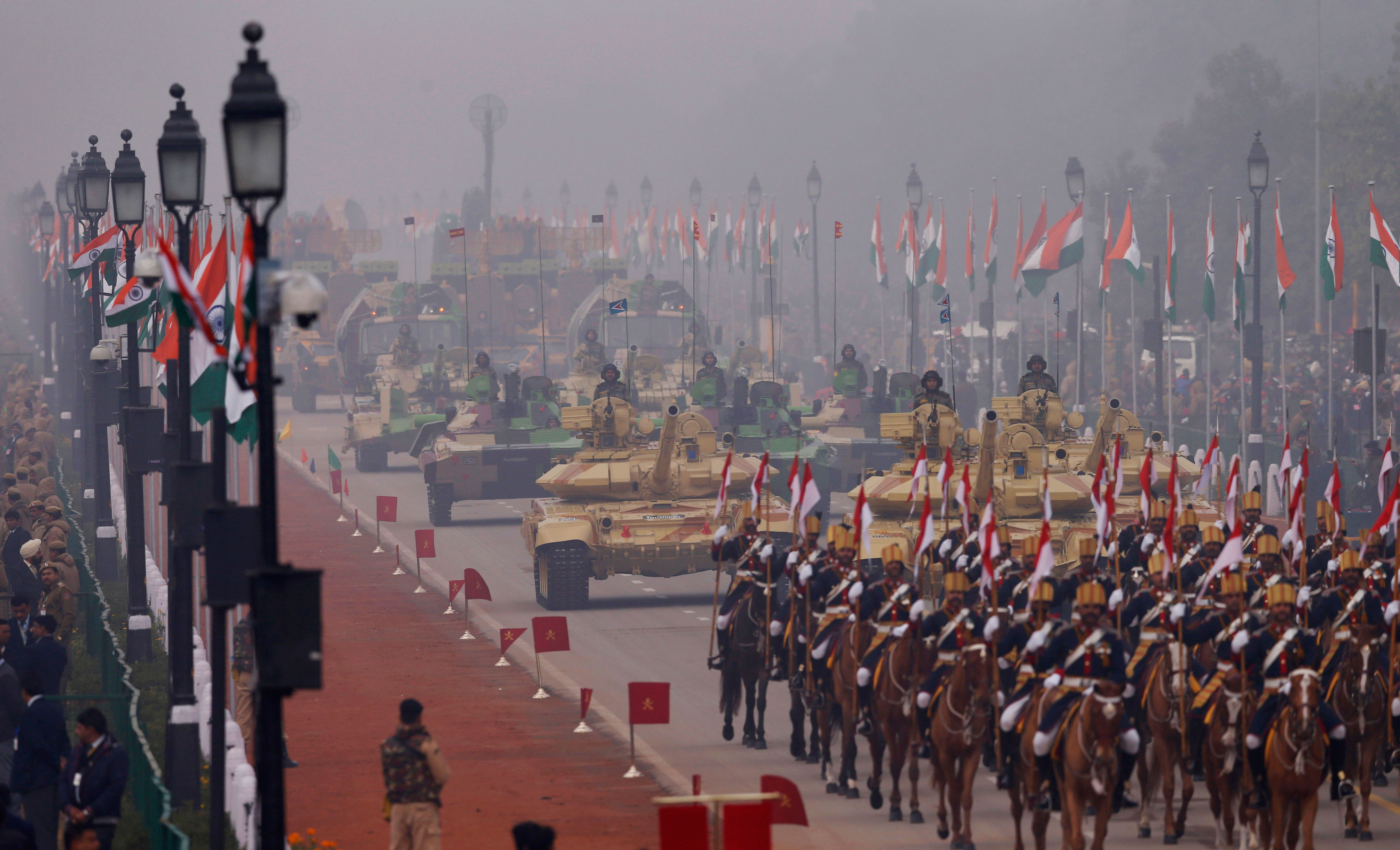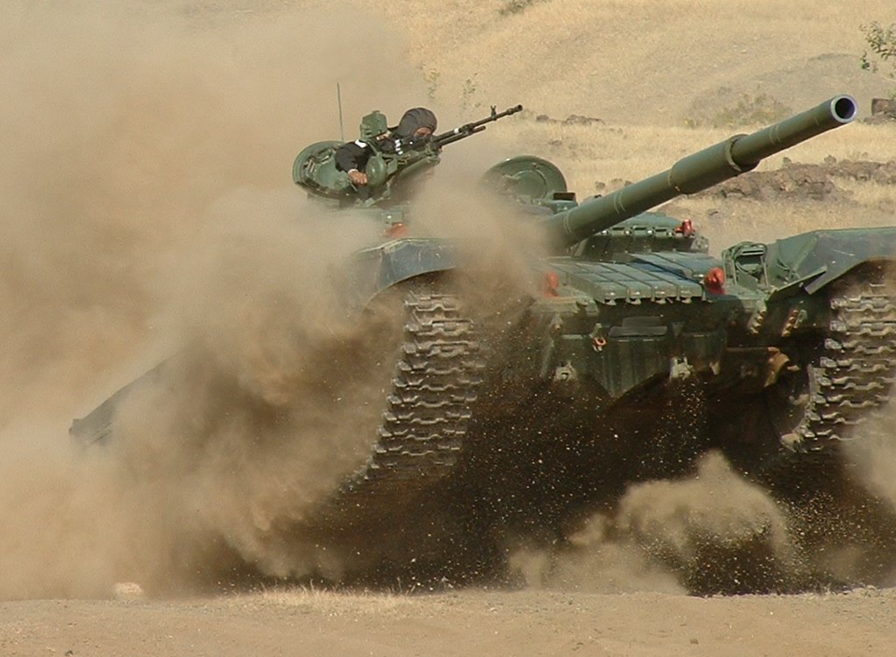Indian republic displays ‘Russian teeth’

Indian army soldiers display the military hardware during the Republic Day parade in New Delhi, Jan. 26, 2014.
APThe traditional parade at Rajpath on India’s 65th Republic Day in 2014 began with the Indian Army's prized asset T-90S main battle tanks rechristened 'Bhishma' after the legendary hero of Mahabharata. The column of Bhishma tanks was followed by the Soviet built but recently modernised infantry combat vehicles BMP-2 rechristened by the Indian Army as Saarath (chariot).
They were followed by batteries of Smerch multiple launch rocket systems (MLRS), as the commentator explained the meaning of the Russian word Smerch - Tornado. And then came the self-propelled Osa AK air defence systems.
Spectators burst into applause when the commentator introduced the next item of the parade - BrahMos cruise missile, a product of India-Russia joint venture. The Japanese Prime Minister Shinzo Abe - this year's special guest at the Republic Day parade, who so far had been serenely watching the hardware marching past the VVIP enclosure, became lively. Perhaps he was aware that this particular cruise missile jointly developed and produced by India and Russia is like an eyesore for China’s naval planners.
As the armour rolled past the dais with the Supreme Commander of the Indian Armed Forces, President Pranab Mukherjee saluting his service personnel, I recalled how long it took India to take decision on acquiring these ‘Russian teeth’.
A timely decision to acquire the Smerch MLRS system, offered by Russia in late 1990s would have been a game changer at the time of Kargil and would have saved precious lives of our servicemen. Only post-Kargil, the negotiations were sped up after a PTI story from Moscow on the capabilities of the deadly rocket system was widely published by the Indian media.
It has to be acknowledged that post-Soviet development of India-Russia military technical cooperation has not only played a substantial role in sustaining the Russian military industrial complex in the initial period, but also resolving many acute social problems faced by it.
I recall my tour of Uralvagonzavod, Russia’s biggest tank producer in 1999, when negotiations were in advance stages to acquire T-90S main battle tanks. Situated far away from Moscow in Nizhny Tagil in the Ural Mountains, this plant was also facing the brunt of 1998 financial meltdown. However, the signing of the tank deal with India, not only gave it a lease of life, but also virtually led to its full revival as the main developer, designer and manufacturer of state-of-the-art tanks.
As the colourful tableaux depicting the life of India’s various states floated past the presidential dais at the Rajpath all eyes were exploring the foggy sky in anticipation of flypast. The Indian Air Force had displayed its best assets in the flypast, which included the recently acquired US transport planes C-130. However, the show was stolen by Sukhoi Su-30MKI multirole fighters, which concluded the flypast with their Trishul (Trident) stunt.
“Look madam, how great are OUR planes!” a young Indian student feeling proud for his country’s military might, told a visiting Russian scholar watching the parade at Rajpath. “Yes, of course, they are YOURS after you bought them,” the lady scholar responded with a smile.
A version of this article was first published in 2014.
If using any of Russia Beyond's content, partly or in full, always provide an active hyperlink to the original material.
Subscribe
to our newsletter!
Get the week's best stories straight to your inbox

